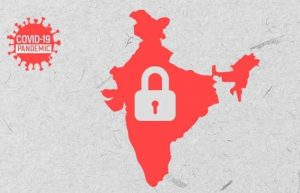
When someone expresses unhappiness, the first thing you ask might them is, “But what do you want?”
Isn’t it curious that we have no reservations about associating happiness with our wants and desires? Yet we all know people who have so much in terms of a structured life, with comforts and leisure time, who simply feel discontented but can’t say why. So what exactly is lacking? We have also probably met people who barely have what we might call the “bare minimum” for survival, but who carry the most enduring smiles on their faces. What do they have that more privileged people lack?
I recently heard from a friend who said that she had attained all she wanted in life in terms of work, family status, home, and a circle of friends, and the question became: “Now what?” We all know this feeling, and somehow we know that, sooner or later, whether we wish for it or not, things change. But we are impatient; when life feels stagnant we seek change and novelty. But the underlying theme is still our focus on things: we can change our partner, our house, our job, but, ultimately, wherever we go, we take ourselves—this body and mind. If we don’t change ourselves, outer changes will only give us a brief illusion of change and our external reality will soon will mirror our internal reality once again.
The understanding and pursuit of “happiness” feels so infantile in this sense, because life shows us, through the seasons and the weather, our skin and our faces, that everything is changing all the time. Yet still we insist on conquering and owning “things,” as if to deny impermanence. And not only things, but even for feelings and emotions: they arise and dissolve into the next wave. Thus has it always been, yet we humans still believe that our wants and needs are important. Our drive is based on an unreliable inner compass: “What do I want?” So the next question is: are you relying on the right compass?
I’d like to share my thoughts on the topic, while avoiding black-and-white definitions and concrete answers, which would kill the pulsating enquiry for the meaning that allows us to really enjoy the lingering mystery and nature of the question.
The renowned poet Rainer Maria Rilke advised:
Be patient toward all that is unsolved in your heart and try to love the questions themselves, like locked rooms and like books that are now written in a very foreign tongue. Do not now seek the answers, which cannot be given you because you would not be able to live them. And the point is, to live everything. Live the questions now. Perhaps you will then gradually, without noticing it, live along some distant day into the answer.
Instead of providing answers, I will inviting you to linger in the perfume of the question and let any answers emerge naturally.
Is happiness truly the antithesis of suffering?

Not so long ago, during a period of deep heartbreak, I found myself talking to god (or my higher self) and explaining how sad I was. I heard an inner voice asking me what would I like to change about my life. In that moment my perspective shifted and I perceived that my life was fundamentally good. I realized that I was blessed with the ability to appreciate life and still have room within me to embrace the deepest sorrow I had ever felt.
I recognize what sadness can bring sometimes: a sense of depth, solitude, and poetry, which I appreciate. During those sad days, I allowed myself to savor my morning coffee slowly, to look out of my window for long periods of time, letting a salty teardrop fall into my coffee and raise a delicate smile on my face. If we relate happiness with absolute comfort and zero worries and confusion, we dull the rich and vibrant spectrum of experience—like a painting that looks flat and lifeless without the contrasts of light and dark hues. Life is simply more interesting when we allow circumstances to ebb and flow. I’ve been told that if we embrace suffering, we should try to do so with art and skill, like anything else. On the other hand, let’s not flatten the meaning of embracing suffering and think that everything is allowed; as in nature, it’s all about balance, and whatever falls out of balance falls sick and dies.
Life is about constantly maintaining that balance, and not getting stuck in rigid ideas of how life should be. Instead, our awareness of how things are flows and intermingles with emotions that one simply inherits, maturing with each new experience. This means being open to life’s natural flow instead of attempting to dictate how it should serve our desires. In maturing, we give birth to the inner alchemist who knows how many teardrops should fall into your coffee and how many to hold back before moving on.
Joy is a celebration in the face of death. You are still here. You can see death, yet you’re still alive. And because you have the maturity to recognize the finitude of everything, you’re able to celebrate. But if you avoid that intimacy with the finitude of all things, your celebration is the unsustainable idea of an eternal parade. Bringing our own finitude closer, or actually inviting it to dance in our daily lives, makes this experience much more interesting—which in my view is more attractive than mere “happiness.” Look for experiences that can help you cultivate the virtue of wisdom, because only wisdom can bring the capacity to truly appreciate what life brings, allowing you to celebrate in the face of impermanence.
Appreciation is a virtue based purely on perspective and not about the object itself. To appreciate your life, you don’t need to have “something.” Appreciation doesn’t depend on external objects. It’s really about choosing to grow with all the different experiences life brings and developing the skill to appreciate it on all levels, be it joy or your tears falling around your feet. So, as someone told me, embrace suffering to enhance your maturity, but learn how to suffer with quality—to do so is an art. Don’t drown in tears and wine, yet don’t avoid the tears and wine. We need wisdom so that we know what to change when we are in pain, and when pain is simply unavoidable. Knowing how to integrate pain—this is the dance of balance. In the end, to be happy is to grow wise. To be happy is a talent earned by experienced people.

Is suffering necessary for happiness?
As I mentioned, the answer lies in nuance: like wine, in excess it’s poison, but it is only by imbibing that you learn the right quantity. This is probably why we seek out priests, gurus, and lamas. The difficultly lies in finding the right measure, and we prefer to abdicate that responsibility to others. However, the “right measure” is inherently individual.
Avoiding all sources of suffering is impossible. Old age, sickness, and death (of others and ourselves) are all inevitable. But I’m not saying we should “learn to cope with it.” I’m suggesting growing beyond that and growing wise through experience. Letting the extract of all your experiences enhance the potency of your celebration.
Steven Pressfield, the author of The War of Art proposes:
. . . In other words, any act that rejects immediate gratification in favour of long-term growth, health, or integrity. Or, expressed another way, any act that derives from our high nature instead of our lower. Any of these will elicit Resistance.
Which means deciding to embrace, or walk with, or dance with, the challenge of bringing balanced tension, and then surpassing that with the authenticity of celebration. Again, I’m not saying that we should seek out suffering in order to celebrate; it will be there naturally. I remember when my son was born. I looked at his perfect face, that seemed so miraculous that it was painful and terrifying, and I wept. I think it’s beautiful to be able to embrace the complexity of these sensations without resistance and without the usual social and inner expectation to be happy all the time. Integration enriches all experiences without effort.

How do we balance pain and pleasure?
I can’t help but give at least one affirmation to this question: always turn to nature.
Are you confused about the flow and direction of your life? Turn to nature. Learn to observe without romanticizing. Nature brings life and death. Nature brings compassion and cruelty when an earthquake or hurricane hits, or a leopard downs a new-born deer for supper with the most contented feeling of pleasure. Everything that spring makes colorful and lush, winter turns brown and mushy in the earth. Over and over again, the deer trains its muscles to be faster, while the leopard practices persistence and strategy, and we build stronger houses and bridges to withstand earthquakes.
We grow stronger and wiser amid the complex weft of life and death to survive physically, emotionally, and spiritually. To maintain the balance of being alive on all levels, we need to embrace the natural cycles of renewal, which includes partially dying. Maybe one aspect of us is constantly dying while another is giving birth. As in nature, nothing can be constant but change.
The problem I see in our modern world is that all our efforts are aimed at minimizing all challenges. We develop technologies to ensure comfort and convenience. But what happens to the boy who was born with everything? He’s unable to appreciate it because he doesn’t know what is to live without his inherited condition. Most of the time he takes it for granted, and lacks the capacity for deep celebration. This was what made Prince Siddhartha Gautama walk away from his comfortable life in the palace. He had never experienced suffering, but he knew it existed. How else could he ever see the reality of nature—the outer and inner nature of everything—without experiencing life outside of the realm of pleasure and attaining liberation?
How important is it to be absolutely happy? Is this goal a new trend? A capitalistic trap to trick us into acquiring more stuff? We don’t need that kind of happiness, and our pursuit of it is making us miserable. Life is not constant, and it is an impossible desire to be blissful all the time. So what did Shakyamuni Buddha mean when he spoke of a life without suffering? Is such a thing even possible? Or did he actually mean embracing suffering wisely and creatively for our own benefit, growth, and development?
In nature, nothing is fixed, and so it is in human nature; we are constantly evolving and redefining our perception, for better or worse. But in our pursuit of happiness, we should skillfully thank our fears and doubts because they are the weights that shape our spiritual muscles, which we need to build a better vision of society and humankind.
To find creative balance amid life’s contrasts, consider setting a clear goal worth suffering for. Enjoy the creative process of attaining the goal and the person you are becoming through accepting the inevitable changes. In working toward your initial goal, you might discover that the process was more important than what you “achieved.” And resist the urge to imitate the past, as doing so only stifles the mystery that we inherently crave. As you experience contentment in this way, you may find yourself gradually drawn more to the mystery of being than to the importance of rigidly defining your state of being.
In this dance of growth and acceptance, happiness reveals itself not as a fixed destination, but as an evolving appreciation for life’s complex tapestry—with all of its joys, sorrows, and unanswered questions.
See more
Tiffani Gyatso
Yangchenma Arts & Music
Related features from BDG
The Secret of All Demons
Atoms of a Thought: Emotional Intelligence in the AI Era
The Horse, the Rider, and Onions . . .
Natural Radiance and the Outer and Inner Sun












